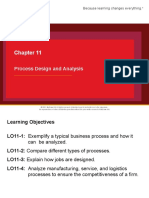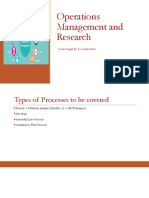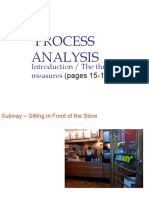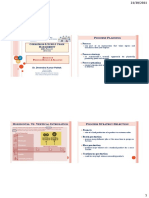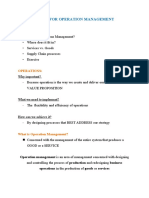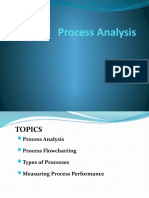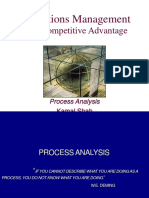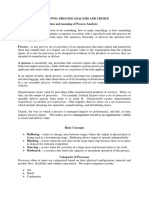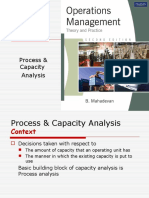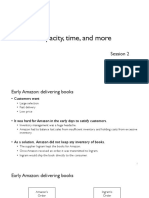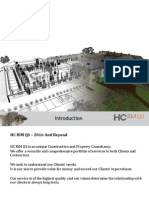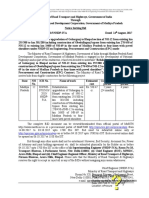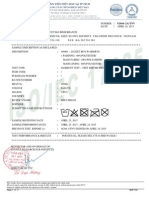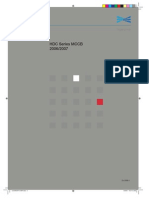0% found this document useful (0 votes)
73 views31 pagesProcess Analysis I
- The document discusses process analysis, which involves analyzing how a process works, identifying value-adding and non-value adding steps, determining production capacity and bottlenecks, and measuring key process metrics like flow time, flow rate, and inventory levels.
- It defines some key process analysis terminology like job units, flow time, flow rate, and inventory. Flow time is the total time a job unit spends in a process, flow rate is the number of job units passing through a point in a process per unit time, and inventory is the total number of job units currently in the process.
- It explains how the three main process metrics of flow time, flow rate, and inventory are
Uploaded by
sreevaishnavCopyright
© © All Rights Reserved
We take content rights seriously. If you suspect this is your content, claim it here.
Available Formats
Download as PDF, TXT or read online on Scribd
0% found this document useful (0 votes)
73 views31 pagesProcess Analysis I
- The document discusses process analysis, which involves analyzing how a process works, identifying value-adding and non-value adding steps, determining production capacity and bottlenecks, and measuring key process metrics like flow time, flow rate, and inventory levels.
- It defines some key process analysis terminology like job units, flow time, flow rate, and inventory. Flow time is the total time a job unit spends in a process, flow rate is the number of job units passing through a point in a process per unit time, and inventory is the total number of job units currently in the process.
- It explains how the three main process metrics of flow time, flow rate, and inventory are
Uploaded by
sreevaishnavCopyright
© © All Rights Reserved
We take content rights seriously. If you suspect this is your content, claim it here.
Available Formats
Download as PDF, TXT or read online on Scribd
/ 31

